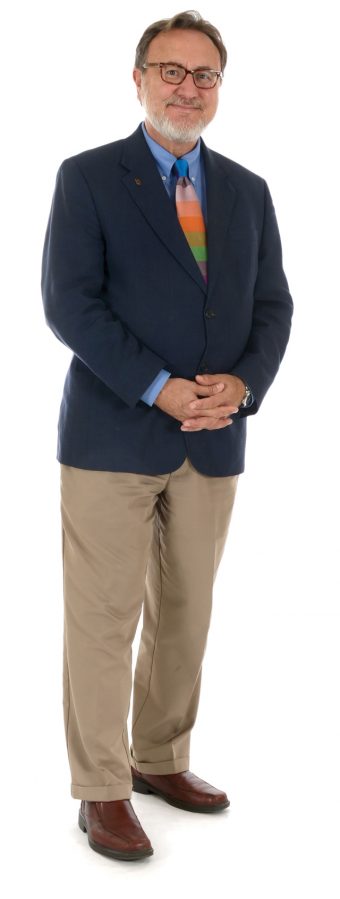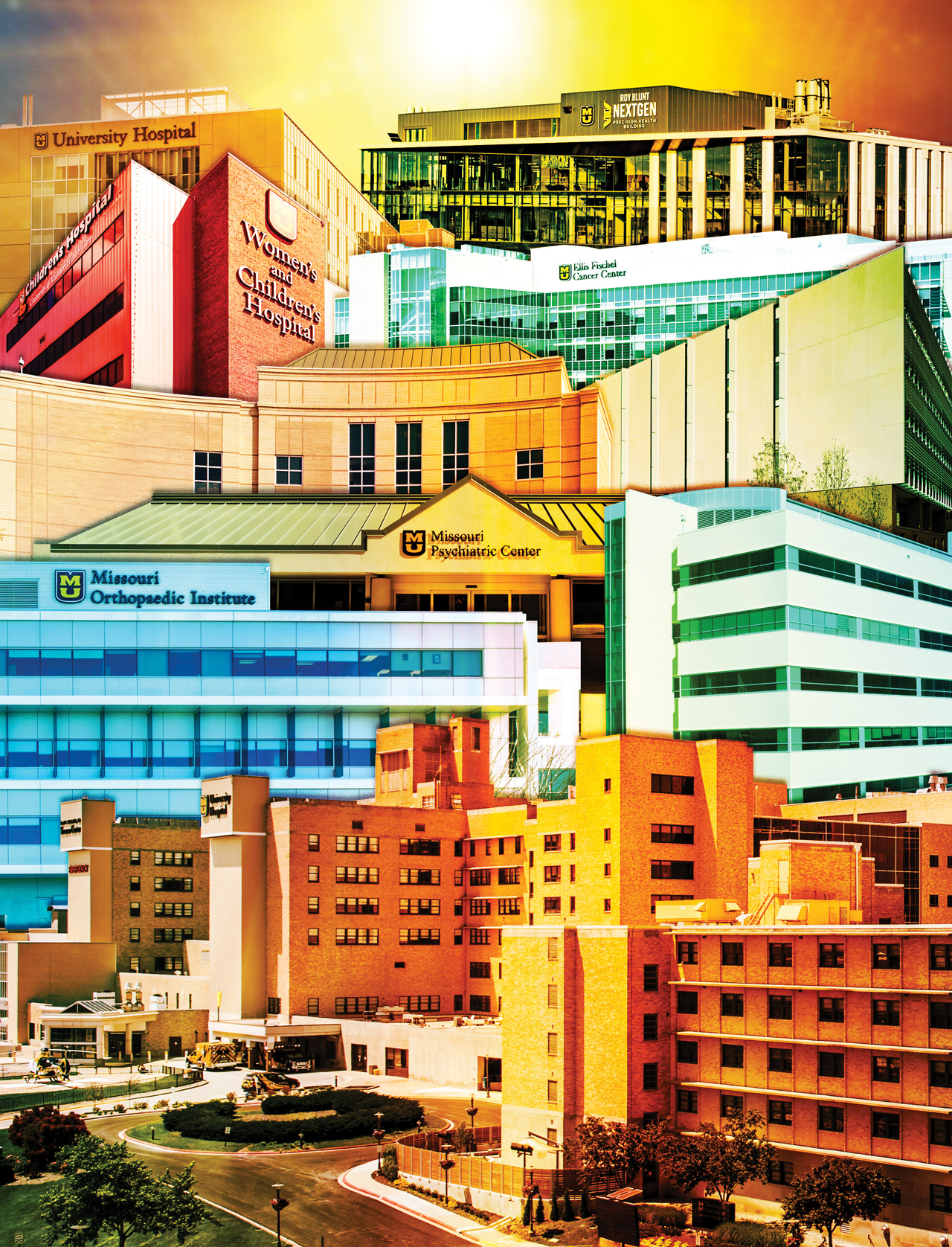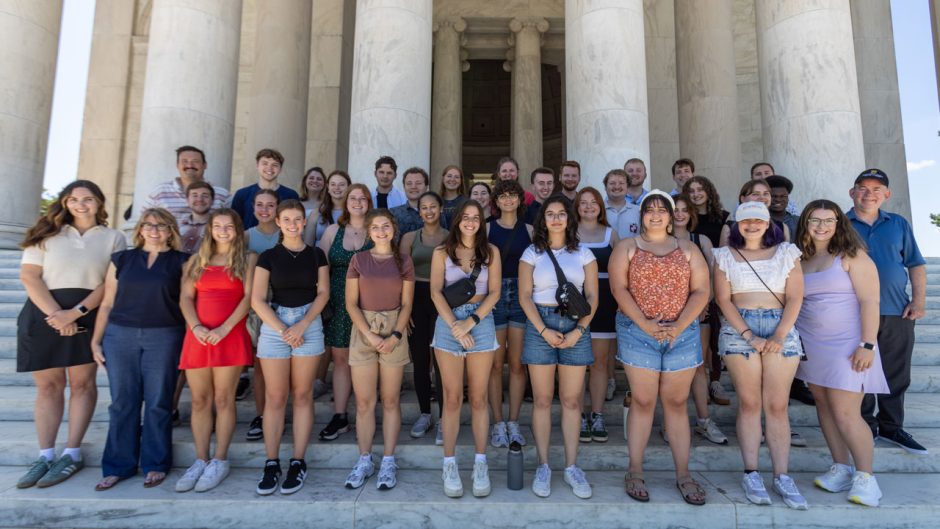Published on Show Me Mizzou Dec. 17, 2021
By MU School of Medicine Dean Steven Zweig, MD ’79, MSPH ’84

Dean Steven Zweig. Photo by Gene Royer.
The University of Missouri School of Medicine is now 150 years old. I have been privileged to participate in nearly one-third of those years — first as a medical student, then resident, fellow, faculty member, department chair and now dean. While we continue to be Missouri’s medical school, with more of our graduates practicing in this state than any other, the diversity within our classes has increased dramatically. In 1979, there were only 16 women in my class of 110. Now, a majority of our students are women, and 20% of first-year students self-identify as belonging to a racial or ethnic population that is underrepresented in medicine. (More here)
Our problem-based, now patient-based, curriculum (More here) along with the clinical experiences of the third and fourth years continue to produce collaborative, capable physicians who enter all specialty areas. We have among the best rural practice pipelines in the country, with 50% of the pipeline’s residency-trained physicians practicing in rural Missouri communities. (More here) Five years ago, we established a vibrant Springfield Clinical Campus and expanded our class size from 96 to 128. Last year, our Pathways to Success program, working in collaboration with the MU campus, created a rigorous preadmissions program for those who self-identify as underrepresented in medicine, who are first-generation students or who come from economically disadvantaged backgrounds.
Our clinical practice at MU Health Care has grown substantially. When I was a student in the 1970s, there were often only one or two faculty members in many specialty areas. We now have over 650 faculty physicians representing all specialties and subspecialties in medicine. As before, we care for people not only from our major service area but also from every county in the state.
We have grown from a single School of Medicine and University Hospital structure completed in 1956 to a complex including the medical library and dean’s office (1985), the University Physicians Medical Building (1996), the Critical Care Tower (1997), the Rusk Rehabilitation Hospital (1999), the Clinical Support and Education Building (2006), the Missouri Psychiatric Center (2009), the Missouri Orthopedic Institute (2010), Women’s and Children’s Hospital (2010), the Thompson Center (2010), the patient care tower with Ellis Fischel Cancer Center (2013), the Patient-Centered Care Learning Center (2017), and the newly completed Roy Blunt NextGen Precision Health building, which is the largest and most advanced research building in University of Missouri history (2021). In 2024, the tower now under construction for a Children’s Hospital and Birthing Center will be complete. I started practice in the first off-campus clinic in Columbia in 1984. Now, we have nearly 30 off-campus clinic office buildings!
Furthermore, we have grown in our research capacity, with our Association of American Universities Phase 1 expenditures increasing from $28.8 million in fiscal year 2019 to $45.3 million in fiscal year 2021. The Cerner electronic health record has enhanced patient care, particularly for those with complex medical conditions. Now as part of the Greater Plains Collaborative, a National Patient-Centered Clinical Research Network center at MU, we can participate in research with 14 academic health centers involving over 20 million patients. And with the opening of the NextGen Precision Health building, we have the capacity to perform research along the full translational continuum from basic sciences to implementation science in populations.
Never have we worked more closely with our MU Health Care partners and the other schools and colleges on the MU campus. This enables us to become an even more impactful academic health system that provides high-quality and advanced patient care, outstanding education and training, and innovative quality improvement and research that improves both patient care and medical training.
It has been my honor to participate in, learn from and contribute to this amazing evolution of our medical school. The persistent and committed leaders of the School of Medicine and health system have enabled this continuing transformation. The people who contributed to this continuous progress are too numerous to count. The progress continues with the current students, trainees, faculty and staff who work to make us better while supporting our mission to save and improve lives through exemplary education, research and patient care.

Clockwise from top left: Critical Care Tower, Roy Blunt NextGen Precision Health building, Ellis Fischel Cancer Center, Patient-Centered Care Learning Center, Clinical Support and Education building, University Hospital, Missouri Orthopaedic Institute, Missouri Psychiatric Center, Physicians Medical Building, Women’s and Children’s Hospital. Photo illustration by Blake Dinsdale.
To read more articles like this, become a Mizzou Alumni Association member and receive MIZZOU magazine in your mailbox. Click here to join.




